Finneby
Aarhus, Denmark
1946–1948
The Finneby neighborhood of Aarhus, built in the mid 1940s, is the largest complex of Puutalo houses in Denmark. In order to alleviate the post-war housing shortage, the Danish government included a large number of prefabricated buildings in the trade agreement that it signed with Finland in 1945. In return for wooden buildings and other products from the forest industry, Denmark exported food to Finland. Over two years, Finnish construction suppliers delivered almost 800 houses, 574 of them supplied by Puutalo. The houses were erected throughout Denmark, sometimes in large developments and sometimes as individual buildings.
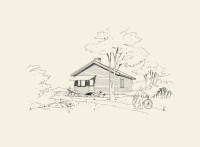
Kaarlo Humanisto’s perspective drawing depicts an idealized suburban life. Models exported to Denmark, such as this Ditte house were named after typical Danish female names. Image © ELKA
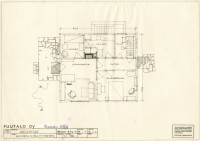
The 56m2 house had three rooms, a kitchen and a toilet. Image © ELKA
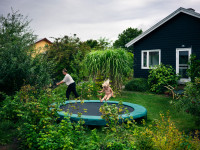
Mathilde and her daughter Vilde spend an afternoon in the backyard.
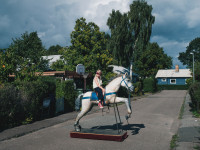
Liv Lou rides a carousel horse in front of her home. The horse belongs to her grandmother, who has lived in the house next door since the 1970s.
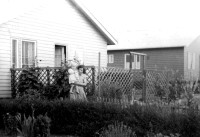
Woman holding a child in her garden. Photo © Aarhus City Archives
The Finneby neighborhood was built by the City of Aarhus about 3 km west of the urban centre, in an area that had been mostly undeveloped. Houses were sold to working-class families at affordable prices on the condition that the plots return to municipal ownership after 40 years. All 122 buildings placed along narrow roads were of the type OK-240 ‘Ditte 2’ with an area of 56 m2. As with all Puutalo models designed for Denmark, these houses were clad with horizontal boarding which covered the seams between prefabricated wall panels. The houses were painted in a variety of colors including red, blue, yellow and green.
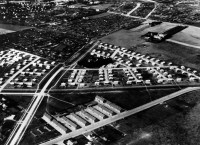
In the late 1940s, the Finneby neighborhood was located on the outskirts of the Aarhus urban area. Photo © ELKA
To promote sales, a demonstration house was built with interiors and furnishings drawn by the well-known Danish designer Børge Mogensen. The furniture could be sold to buyers of the homes as a complete package. In addition to the houses, Puutalo delivered a commercial building to the area, and one house was also converted into a library. A municipal kindergarten was built in the middle of the district, and in 1951, the residents´ association acquired a former barrack building used the German army, which continues to serve as a meeting space for the community.
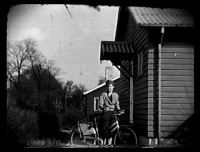
A woman stands with her bicycle in front of the entrance to a house. Image from Finneby: The First Year, 1948.
Today, Finneby is a popular middle-class residential area with a close-knit community and an active residents´ association. The buildings have been preserved, but they have also been extended in various ways. A ring road, built in the 1980s, divides the area in two parts, but their shared history unites residents of both ‘little’ and ‘big’ Finneby.
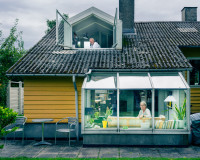
Vitter and Jens Erik moved into their house in 1979 and raised two sons there. One of the boys now lives down the street with his own family. Jens, an architect, has renovated this house as well as many others in the neighborhood.
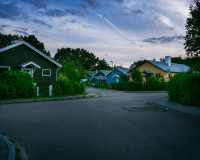
Each of the 122 houses built in the neighborhood were constructed to the same plans, but decades of use and adaptation have given each home a distinct character.
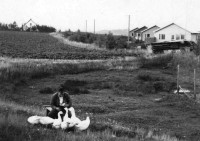
Man feeding geese on the edge of Finneby. Photo © Aarhus City Archives
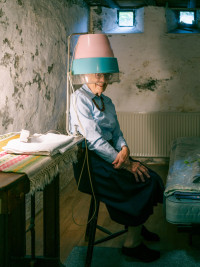
Karen has dried her hair in this house for over 70 years. She moved in with her husband Erik in 1950 and raised their children there. Today she remains an active member of the neighborhood.
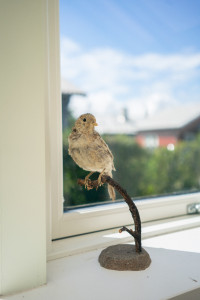
A stuffed bird rests on the windowsill of a house on Gudhjemsvej street.
